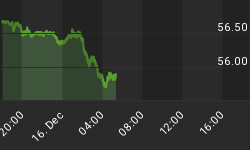There is no shortage of market gurus on Wall St. who will tell you that inflation is low. The main evidence for their argument stems from the relatively low rates on Treasury bond yields and the narrow spreads on inflation protection securities know as TIPS. Whereas I believe the currently low yields on Treasury debt to be explainable, it is very dangerous to draw the wrong conclusion about inflation from bonds' elevated prices.
Investors today need to adequately align their portfolios to protect against rising prices. Below are seven reasons why I believe it would be harmful for investors to buy into the belief that inflation is non-existent.
Reason #1: Today's low Treasury yields are the result of fear on the part of investors to hold fixed income debt that is not backed by the government -- not the result of low inflation expectations. Once the fear of owning debt issued by banks and corporations ebbs, Treasury yields should rise dramatically.
Reason #2: The root of inflation, which is the growth rate in the money supply, is soaring. MZM (money of zero maturity) is currently running at an annual growth rate of 8.8%, 11.9% above last year's already-elevated level. This is far above the rate of GDP and is the reason why prices are rising on both the consumer and wholesale level.
Reason #3: Precious metals, commodities and energy prices are soaring and commodities of all stripes have been reaching new nominal highs recently. It is virtually impossible to have these inflation-sensitive commodities rising simultaneously without an elevated rate of monetary inflation.
Reason #4: The world's biggest market, one that dwarfs the bond market 10 fold with a 1.9 trillion dollar per day trading volume, is the foreign exchange market. This market has sent the U.S. dollar to record lows on the trade-weighted index. The falling value of the dollar is not only indicative of higher inflation, it is part of the definition of inflation. It causes import prices to increase and lends itself to rising asset prices inside the U.S.
Reason #5: According to the government's own under-stated statistics, inflation is currently very high. Consumer inflation is at a 17 year of 4.1% while wholesale inflation is running at a 26 year high of 6.3%. It is difficult to reconcile the difference between the rate of inflation, the current yield on the 10-year note of 3.55% and the TIPS breakeven spread of 2.26%--which is a measure of investors' 10-year outlook on inflation expectations. There is an obvious lack of value in bonds, as their current real yield is profoundly negative.
Reason#6: Estimates on budget deficits emanating from the White House for this fiscal year are over $400 billion. That's an increase of 147% ($238) billion from last year's deficit of $162 billion. With skyrocketing budget deficits and massive increases in bond issuance, how can the market's view of inflation remain sanguine?
Reason#7: The administration and Wall St. abound with talk of bailouts of banks, consumers and the mono-line insurance companies. With bailout bubbles looming everywhere, how can inflation expectations be anything but higher? The bond market is not discounting the effects of massive money printing, a deficit-busting tax rebate and talk of government takeover of companies that insure against CDO and municipal bond default.
The reason why investors are bidding bond prices higher is a measure of fear in the market, most notably fear of recession and investors' habit of running to Treasuries as a safe haven in such periods. However, those who still choose to believe inflation is of little concern must willfully ignore the evidence of its existence all around us, and it is to their financial peril if they continue to ignore it.
**NOTE: Listen to my new podcast, the Mid-Week Reality Check. Five minutes of sanity in an insane financial world!
Also, you can click here to learn about the Commodity Inflation Portfolio I run for clients.
















